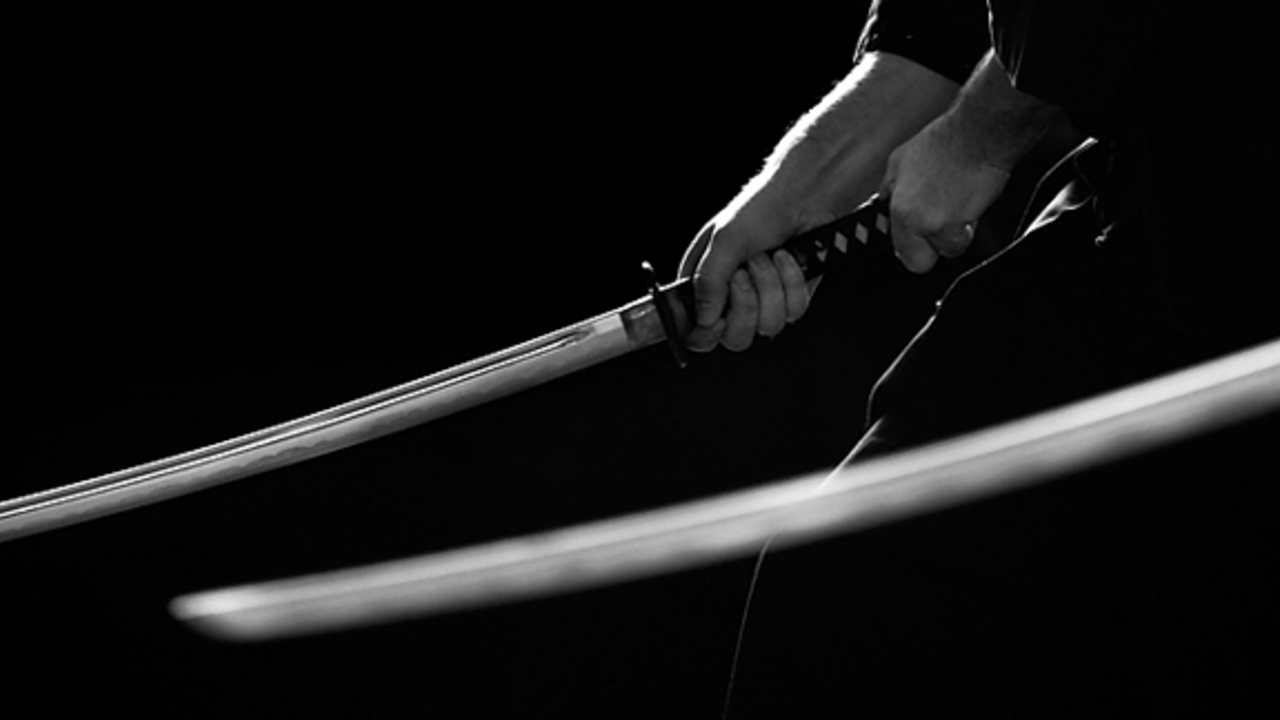Turning Uke's Hand | Kote Gaeshi's Spiral Leverage

For almost a year living in Japan, I have been studying how to off-balance my training partners that I am throwing (Uke's). Off-balance or breaking a person's balance is called Kuzushi. I have been training Karate, Judo and Aikido while all this time catching some great moments in my learning curve on this topic. This has assisted in my research of evolving taiho jutsu arresting technique and specifically something of value to add to the Gunji Taiho Jutsu system.
One of the key positioning points or objectives to reach in Gunji Taiho Jutsu is the outside position (outside line). This is the point just next to your training partner or someone that you wish to bring to the ground to arrest. From the outside line, it to easy to gain the back position which is even better in terms of superior positioning to protect yourself from a bigger and stronger person. In former blogs, I have discussed the universal arm control with two hands-on holding a person's one arm. This universal arm control...
Prof. Kenji Tomiki and His Striking Approach To Kuzushi

Having recently returned from Osaka, Japan, I was able to research Prof. Kenji Tomiki's work in Judo, Aikido and the development of Competitive Aikido called often: Tomiki Aikido, Competition Aikido or Shodokan Aikido. Osaka today is home to the headquarters of the Shodokan Aikido Federation. This is the main dojo that Prof. Tomiki started before his death in 1979. Firstly, it must be pointed out that Tomiki was a unique practitioner of Budo as he was deeply knowledgeable in both Judo and Aikido. Prof Tomiki was a University teacher and Judo coach in Tokyo. Let me present his ranks in Martial Arts.
Prof. Kenji Tomiki, 8th dan in Judo under founder Dr. Jigoro Kano and 8th dan in Aikido under founder O Sensei Morihei Ueshiba.
In addition, while working at Waseda University, Tomiki was able to organize Aikido as a recognized club. He was the first person to do this in Japan by developing a competitive form of Aikido that Waseda University wanted to see to be gained as fully sa...
Iaido Is A Path Towards Taking Initiative

In the last Gunji University blog, I wrote about the understanding of the zero-concept relating to Judo grip fighting and also the Japanese Martial Arts ideas of when to attack: Go No Sen (After the attack); Sen No Sen (Attack the attack); and Sen Sen No Sen (Taking initiative). Having lived in Tokyo for more than 9 months I am only starting to understand Budo. This study for me has always been picked up and down to know more about Bushido culture while training in Martial Art all these years; however, today I see many issues relating to Bushido origins and its historical context during Japan's modernization Meiji period. I have concerns with people today throwing words like Budo and Bushido around in the United States when they have such a focus on Sport and Mixed Martial Arts culture. As I study, I am only beginning to understand Budo here in Japan, and in a positive way I have been enjoying training in Judo, Karatedo, Aikido and now Jodo (Jojutsu/Short Staff). I would like to p...
The Budo Way - Attacking Late, Same Time and Taking Initiative (SEN SEN NO SEN)

At this time in my Military career, I am in the position of being key personnel to Commanders. One of the things I enjoy is having little golden moments of mentorship and learning how these officers approach leadership. I always write little pearls of wisdom shared or ideas of principles that are universal. Each commander that I have been able to work with has gotten to know a little about my Martial Arts background. I always think of the question, "If I only had 10 minutes to teach a Commander Martial Arts because he or she asked me to show a move, what would it be?" Keep in mind, we would not have nice training mats to do ground techniques, yet there is a great chance that the request would be in the Military uniform. So, in the many times this played out in my mind and the few actual opportunities I had to do his with Officers and Chiefs, I taught the Concept of Zero using Judo Grip Fighting called Kumi Kata.
Right now you are thinking, "What does math have to do with Jiu Jitsu/...
History of Taiho Jutsu - Part 1

The term 'Taiho Jutsu' 逮捕術 was first used during the latter years of feudal Japan. "Jutsu, or Jitsu, roughly translated as 'Fighting System' and 'Taiho' for 'Arresting'. Together, Taiho Jitsu, could be translated as Arresting System, as a thread of the JuJitsu fighting family.
Originally used by Street Police of feudal Japanese Cities. Police who would need these techniques during encounters with thugs and criminals. A major difference between the Taiho Jitsu techniques and other JuJitsu concepts was found in the fact that Street Police were not permitted to use lethal force or force that caused serious injury to their detainees. The majority of techniques were unarmed and aimed to restrain, pin & arrest instead of a strike or submit. As times & cultures evolved, so did basic Law Enforcement and street defense tactics. The need for an unarmed Street Fighting Martial Art used by Police began to become a thing of the past. As did many other Martial Arts of feudal times, Taiho Jitsu ...

